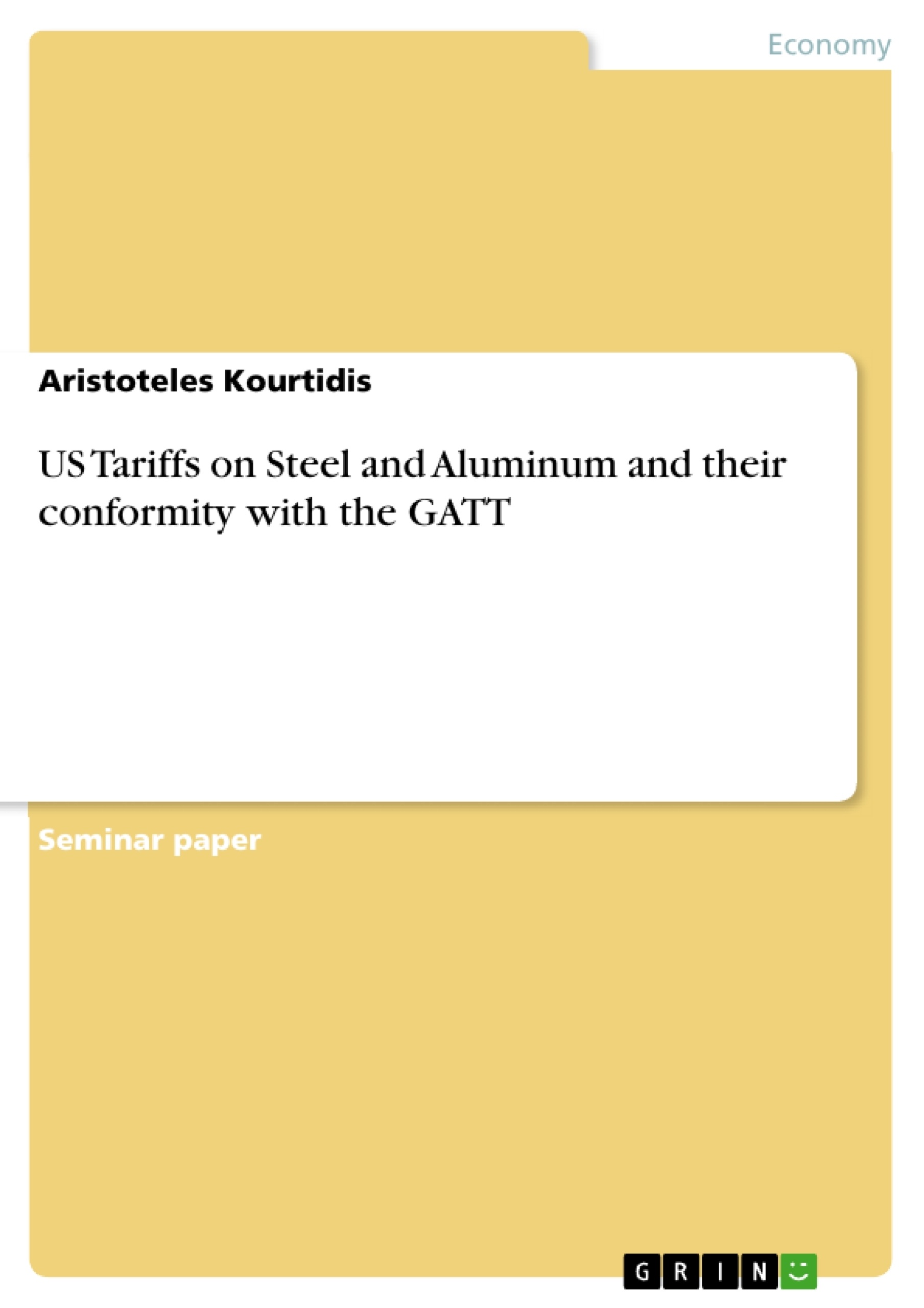“I am a Tariff Man. When people or countries come in to raid the great wealth of our Nation, I want them to pay for the privilege of doing so.” These are the words of the current president of the US, Donald Trump. During the election for president in 2016 he
made numerous protectionist election promises. One of his election promises was to create new jobs in the American industry. American companies should purchase on the domestic markets to strengthen the manufacturing sector and create jobs. Added to this is Trump's aversion to free trade agreements which makes him a supporter of tariffs.
These two points are in line with the development of US tariffs on imports. Looking at the steel and aluminum industry, the USA introduced Tariffs during the term of Donald Trump. The import tariff on aluminum currently equals 10 % and the tariff on steel
25 % of the goods value.
However, the US is as well one of the main responsible states in the creation of the General Agreement on Tariffs and Trade (GATT) which provides free trade and has been a contracting party of the trade agreement since 1948 which in other words means since the very first hour. The question in this context is to what extent tariffs and the GATT are compatible with each other and how it is possible for a contracting party to the GATT to levy tariffs at all. [...]
Table of Contents
List of Figures
List of Tables
List of Abbreviations
1 Introduction
1.1 Problem Definition and Limitations of Research
1.2 Objective and Organization of Research
2 Definition of Basic Terminology
2.1 Definition of Trade
2.2 US Trade Policy and National Laws
2.3 Definition Trade Barriers with the Focus on Tariffs
3 World Trade Organisation
3.1 History of the World Trade Organisation
3.2 Structure of the World Trade Organisation
3.3 Principles of the World Trade Organisation
4 US Tariffs on Steel and Aluminum
4.1 General Facts about the US Tariffs on Steel and Aluminum
4.2 Microeconomic Effects of Imports and Tariffs on Supply and Demand
4.2.1 The Functioning of Supply and Demand
4.2.2 Effects of Import on Supply and Demand of Steel
4.2.3 Effects of Tariffs on Import on Supply and Demand of Steel
4.2.4 Evaluation of the Effects of Imports and Tariffs on Free Trading
4.3 Evaluation of the Conformity of Tariffs with the GATT
5 Conclusion
5.1 Summary
5.2 Critical Review and Outlook
Appendices
Appendix 1: Figures
Appendix 2: Tables
- Quote paper
- Aristoteles Kourtidis (Author), 2020, US Tariffs on Steel and Aluminum and their conformity with the GATT, Munich, GRIN Verlag, https://www.grin.com/document/542900
-

-

-

-
Upload your own papers! Earn money and win an iPhone X. -

-
Upload your own papers! Earn money and win an iPhone X. -

-
Upload your own papers! Earn money and win an iPhone X. -

-
Upload your own papers! Earn money and win an iPhone X. -

-
Upload your own papers! Earn money and win an iPhone X. -

-
Upload your own papers! Earn money and win an iPhone X. -

-
Upload your own papers! Earn money and win an iPhone X. -

-
Upload your own papers! Earn money and win an iPhone X.

